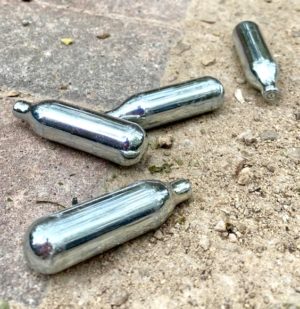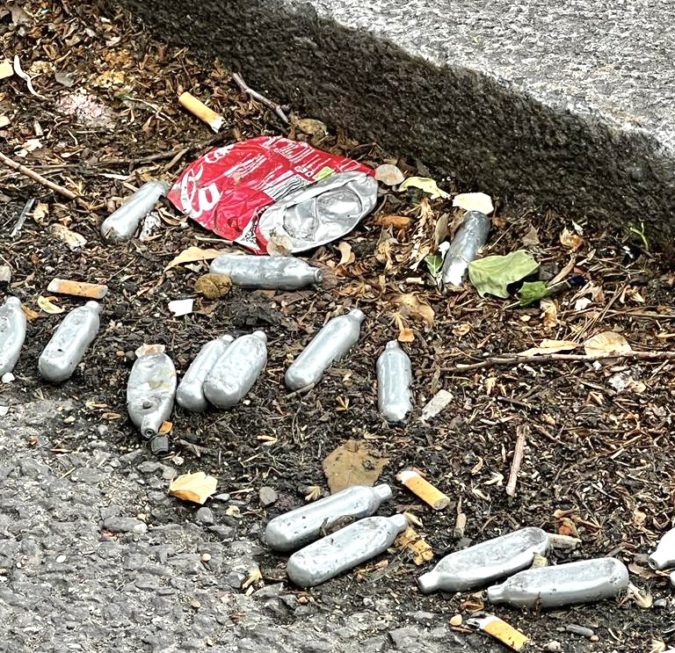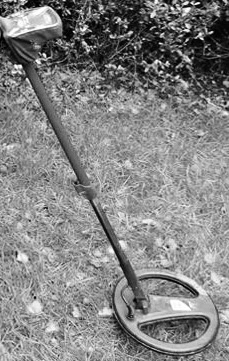Legal highs and illegal lows – are nitrous oxide capsules bad for woodlands?

As long ago as 1772, it was discovered by the chemist Joseph Priestley that breathing Nitrous Oxide (N2O) could cause interesting effects on the brain - creating a sense of euphoria as well as anaesthesia, analgesia and even amnesia. More recently the gas has been bottled in canisters and is then transferred to balloons to be inhaled. Breathing in this gas creates "legal highs" - legal in the sense that inhalation is not illegal although selling "noz" or "whippets" for human consumption to under 18s is illegal. But they are so popular that one person told me that any party worth attending will have a "Noz Bar" where you can buy canisters to induce their dream-like effects.
Indeed these "laughing gas" cylinders became even more popular during the covid lock-downs and became the high of choice, despite the fact that it can be dangerous to take it especially if combined with alcohol or where there is a risk of falling. Equally disturbingly, the canisters are often discarded and you will often see piles of them outside nightclubs but they are also frequently left on verges and outside woodlands and in public spaces. To give an idea of the scale of use of nitrous oxide or "noz", it is officially the second most popular drug for 16-24 year-olds after cannabis and according to the ONS 9% of this age group have tried nitrous oxide.

It would be hard to completely outlaw the use of these canisters because they are legitimately used in commercial kitchens for making whipped cream - hence the nickname "whippets" - and similar shaped canisters are also used by cyclists for filling repaired tyres. With the low cost of mass production and large scale imports from China, the wholesale cost of these can be as low as 25p each and they are supplied in large cartons so vast numbers are deposited in the countryside. It would also be hard to tax these as a technique for reducing consumption but the government seem at least to have considered making illegal their consumption as a recreational drug, but perhaps the biggest driver of consumption is the high profit margins made from reselling these. A dealer will make a mark-up of 1,000% (ie 10x) and they are low volume so a lot of canisters can be carried by an individual. Festivals and outdoor events are therefore an attractive place to sell these - so they get into the environment more readily than most containers.
 These 'silver bullets' of nitrous oxide are designed to be very tough as they contain concentrated gas but the effect of this is that they are almost indestructible and threaten to create a serious nuisance, littering the countryside. It's possible that these canisters create useful homes for some insects and spiders - a bit like discarded drinks cans and bottles can do, but the effect is surely detrimental to conservation efforts. Being heavy they are likely to sink into the ground and are hard to collect and they will be a nuisance for gardeners, metal detectorists and foresters. So, with the rapid build-up of these discarded gas containers into the environment, the question is what on earth can be done about it?
These 'silver bullets' of nitrous oxide are designed to be very tough as they contain concentrated gas but the effect of this is that they are almost indestructible and threaten to create a serious nuisance, littering the countryside. It's possible that these canisters create useful homes for some insects and spiders - a bit like discarded drinks cans and bottles can do, but the effect is surely detrimental to conservation efforts. Being heavy they are likely to sink into the ground and are hard to collect and they will be a nuisance for gardeners, metal detectorists and foresters. So, with the rapid build-up of these discarded gas containers into the environment, the question is what on earth can be done about it?
Nitrous oxide has been linked to damage to the nervous system and paralysis. A recent article details the risks.
Comments are closed for this post.
Discussion
I’ve seen some great Damascus knife blades made from Noz canisters.
I don’t think the problem is really about the use of N2O gas. Lots of people use different behaviours or substances to change their perception: exercise, meditation, alcohol, chocolate, sex, psychoactive plants etc. People have just become habituated to criticising other peoples choices in this matter if they are not ‘sanctioned’, not used by themselves and generally criticised by society. Like most things carrying them out to excess is not usually particularly good.
There are two real problems here. (IMHO)
The first being that so many people treat any piece of woodland as though it theirs to do as they please in regardless of signage and obvious signs of private ownership. This attitude, I think, brings on those sort of behaviours such as the littering of wild places, endless Noz canisters being left lying around and endless amounts of dog excrement on tracks and hanging in trees. Really not so hard to take either home with you. It’s not anyone else’s job to clean up after you (or your dog)
Have fun in the woods (if you have permission to be there). But always respect it and it’s nature and it’s animal inhabitants. Leave it as you found it and please just give the wildlife some space.
Too many people and, more importantly, too many dogs, just scares all the wildlife away. Not just for yourself but for everyone else as well
Am I right to assume these are metal and could therefore be taken to metal recycling at the tip? I have done this in the past. I think they are metal. However, they are a pain to collect as the blog suggests.

Education, education, education
Parents setting good example by not littering themselves would go a long way to helping. I live in London and it’s almost unbelievable how much litter I see being dropped on the school run. Not just by the kids but by their parents as well. Food wrappers, nappies…
I used to think politely saying “you seem to have dropped something” was a possible way forward. But no matter how politely done it usually seems to provoke aggression.
Ho hum.
Richard
15 November, 2022